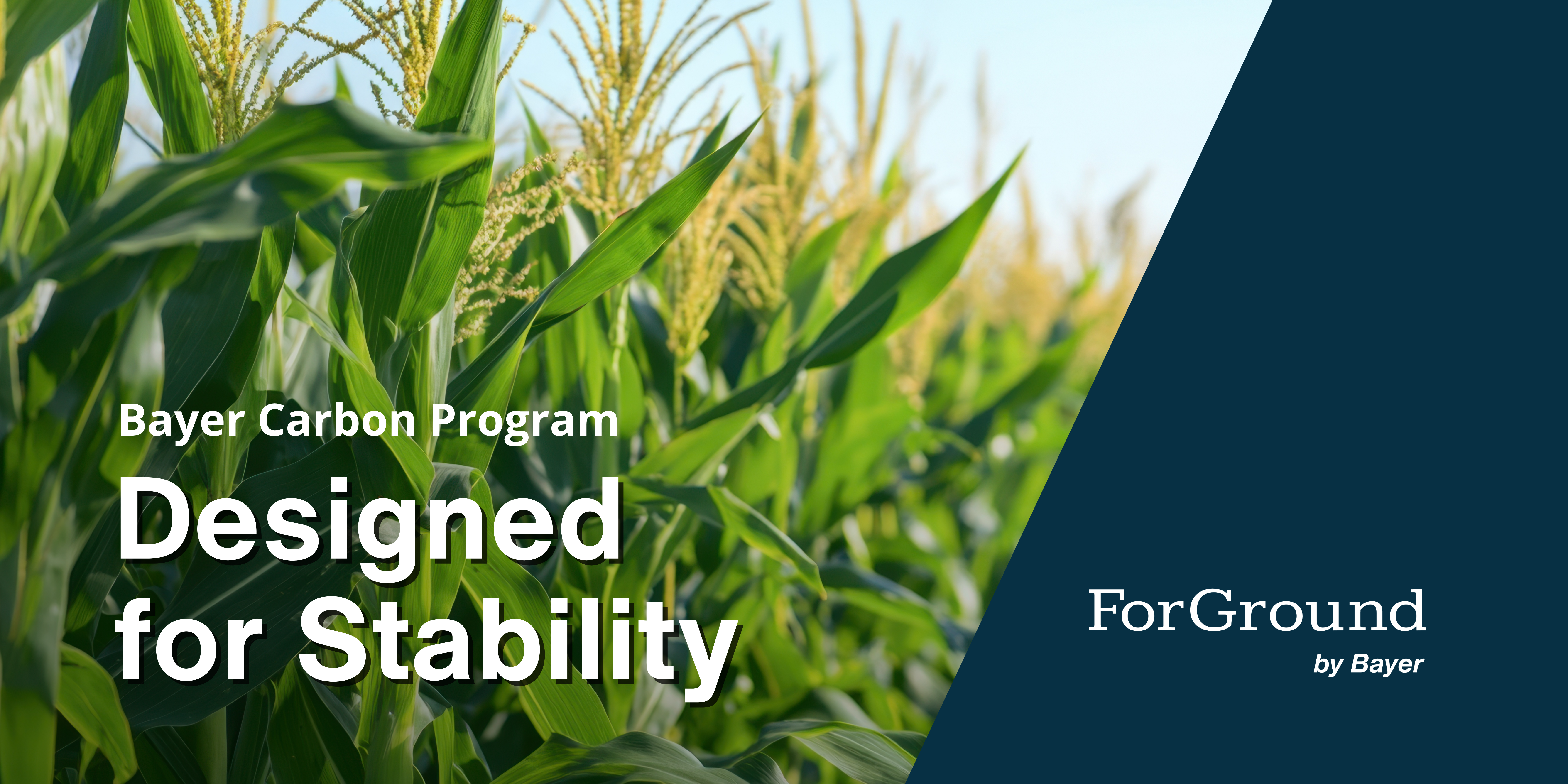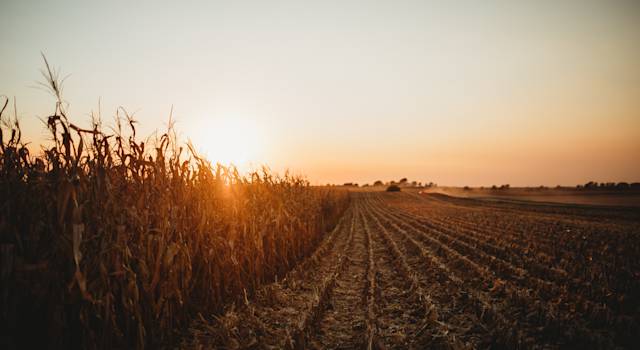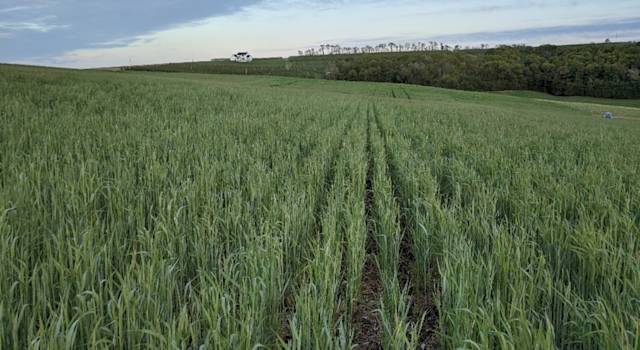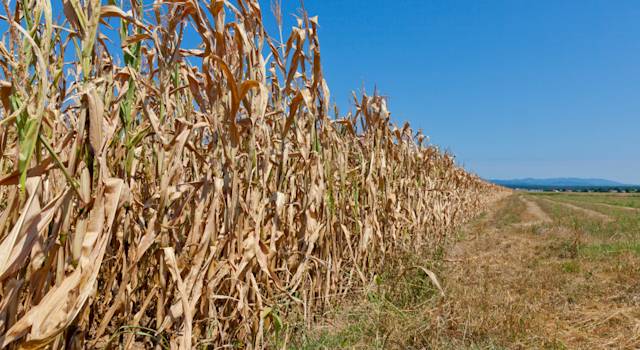Article
Find articles here.

Digging Deeper: The Meaning Behind Your Soil Test
Soil tests are a diagnostic tool for farmers and provide insights into soil properties like nutrient composition, pH, organic matter, texture, cation exchange capacity, and soil biological activity.

When a Carbon Program Ends: What to Consider Before Your Next Step
As carbon program contracts come to an end, growers may be evaluating what comes next. Learn what to consider when reviewing your current agreement and exploring future options.

2025 Winter Weather Outlook
Experts from BAM Weather and ForGround by Bayer as the forecast for the winter season and beyond. Plus, they give some outook-driven agronomic considerations.

The Choice Is Clear: Bayer Carbon Program
Choosing a carbon program is a big decision. For many growers, Bayer’s trusted reputation, transparent process, and flexible earning opportunities made the choice clear.

How To Add Fields In FieldView
Wondering how to add fields in FieldView™? We put together this simple six step list to walk you through the process.

Navigating 45Z: What’s Changing and Why It Matters for Farmers
New changes to the 45Z Clean Fuel Production Credit are on the horizon. Learn what’s changing, when updates take effect, and why it matters for farmers.

Bayer Carbon Program is Here to Stay
The Bayer Carbon Program offers long-term, market-based incentives for farmers, with potential payments over 20 years through a stable, privately funded structure.

Bayer Carbon Getting Your Data Ready
To enroll, you will need to provide detailed, verifiable information that helps confirm your eligibility and ensures you receive credit for the regenerative practices you’ve already put in place.

Effect of Vertical and Strip-Tillage on Corn and Soybean Grain Yield
Effects of vertical and strip-tillage practices on corn and soybean yields. Examining agronomic benefits and challenges provides insights to help make informed decisions about tillage strategies.

45Z Clean Fuel Production Tax Credit & Carbon Intensity Scores
Official USDA eligibility guidance for the emissions-based 45Z Clean Fuel Production Tax Credit is still pending; early indications suggest that a Carbon Intensity Score could determine eligibility.

45Z Clean Fuel Production Tax Credit New Guidance for Farmers
Overview of the 45Z tax credit, which replaces the 40B and BTC incentives, focusing on emissions-based eligibility and CI scores.

Cover Crop Benefits for Productivity, Soil & Environmental Health
The use of cover crops, a crop planted outside of the normal cash cropping sequence, is becoming a more common agronomic practice with over 15 million acres in the U.S. in 2017.

Putting Regenerative Farming into Practice
With a passion for farming that extends back generations, today’s Engel Family Farms covers more than 30,000 acres in Virginia and North Carolina.

Meet Josh Betcher
Managing risk is a continuous process for Josh Betcher, owner of JB Farms LLC, ensuring his operation remains steady, productive, and sustainable.

Managing Cover Crops Prior to Planting Corn
Cover crops can provide many benefits including weed suppression, reduction of soil erosion, improvement of soil quality, and—depending on the species provision of nitrogen for subsequent crops.

Setting Up On-Farm Trials Using Climate FieldView to Test Regenerative Agriculture Practices: A Step-by-Step Guide
The Climate FieldView platform helps farmers collect and analyze field data, enabling on-farm trials to test practices and inputs for optimized yield and efficiency.

Understanding Carbon Intensity Scores: A Guide for Farmers
As the biofuel industry grows, the importance of carbon intensity (CI) scores in assessing the environmental impact of fuels, particularly ethanol, becomes increasingly significant.

Meet Clint Orr – A Eureka Moment Points the Way Toward a Successful Future
Clint Orr leads the way in regenerative agriculture, using sustainable practices, technologies, and data-driven insights to transform his North Central Indiana farm into a model of farming success.

Managing Voles in No-Till and Cover Crop Fields in the United States
Voles can pose significant challenges for farmers, particularly in no-till and cover crop systems. Read our article to learn effective management strategies for sustaining agricultural productivity.

How Cover Crops and Herbicides Can Help You Control Weeds
Consider this unique strategy for effective, season-long weed management.

Targeting the Right Cover Crop for Your Operation
Learn what the right cover crop might do for your farm

What Farmers Need to Know Now About 40B and 45Z Tax Credits
Our team at Bayer is actively engaged in understanding how 45Z will be implemented to help ensure farmers will receive any benefit for which they’ve qualified. Here's what we know.

How to Sign-up for ForGround in Under a Minute
Signing up for ForGround by Bayer is simple. It takes less than one minute. The best part, it's FREE. No cost, but you get all the benefits.

How to Tackle Weeds in No-Till
In the absence of conventional tillage, growers can turn to other production methods to help control weeds. Consider these cultural strategies to help you successfully manage weeds.

Cover Crops Residual Activity of Bayer Corn and Soybean Herbicides
Understanding the effects of residual herbicides on cover crops helps guide both the cover crop and herbicide selection process and avoid potential cover crop failures.

Bayer Carbon Program Expands Eligibility, Creates New Potential Revenue Streams for Thousands of US Farmers
Program updates include additional eligible states and cash crops, program renewal potential, extended historical practices payment period, and a new Nitrogen Management Program.

ForGround Events
Join us for educational events to help you advance your knowledge base of no-till, strip-till, cover crops and carbon credits. Our experts will be on hand to assist you.

Data Management: It's All in the Details
As data and technology only continue to play a key role in farm businesses, having organized and insightful information can help position you for future opportunities.

How To Turn Soil Samples Into Profitable Decisions, One Test at a Time
As you fill the management toolbox with key strategies for maximizing crop success, making sure your soil tests are up to date, properly sampled and analyzed is critical.

Increase Your Bottom Line by Switching to No-Till
We know that no-till is great for the health of our soils and for long-term sustainable agriculture. What we probably don’t talk about enough is how no-till farming can also increase profit margins.

Yield Enhancing Practices for Better Profitability
Boosting yield is the ticket to better profitability. The obvious seems simple enough. But what strategies can growers act on to ensure they’re doing all they can to maximize crop performance?

As Good as Gold: How to Safeguard the Value of Your Soil
Farming practices that support soil health can help producers work with the land to reduce erosion, manage water infiltration and improve nutrient cycling.

Cover Crops and Nitrogen Management
Utilizing alternate cover crop species, adjusting termination timing and nitrogen management practices, or planting cover crops ahead of soybeans can mitigate potential problems.

Landowner Communications Are Critical to Successful Practice Changes or Conservation Projects
As a farmer, you know what’s best for the land you manage, but does the landowner? Opening communication can be key not only to successful practice changes, but also to future conservation projects.

Managing Through Drought Starts from the Ground Up
With drought plaguing much of the Corn Belt this year, strategies to help farmers manage through tough times can make all the difference in growing a successful crop.

Fuel Farm Revenue
As a farmer, so much of what you do is about the bottom line. But what if the way you farm could help you both maximize farm income and simultaneously build a more sustainable operation?

What Happens After Enrolling in the Bayer Carbon Program?
It’s official – you’re part of the Bayer Carbon Program! So, what now? Find out what comes next after you enroll in the Bayer Carbon Program.

Understanding Additionality in the Carbon Market
Participating in the carbon market is a huge opportunity for farmers who adopt regenerative practices. Grasping the concept of additionality first is essential to understanding carbon market functions

Cover Crops and Nitrogen Recovery
While critical for plant growth, the behavior of nitrogen in the soil is fraught with potential transformations and losses, which ultimately reduce the amount of nitrogen that reaches a plant.

Managing for Spring Cover Crop Moisture Consumption Starts in the Fall
Cover crops can positively or negatively impact soil moisture of the following cash crop. Management decisions starting in the fall can help to mitigate potential issues come spring.

Fall Herbicide Applications in No-Till Systems
Winter annual weeds ordinarily controlled by a spring tillage pass require growers in no-till operations to take a more proactive approach to ensure season-long weed control.

5 Species of Cover Crops to Try This Fall
Whether you are a new cover crop user or a seasoned veteran, it’s never too early to start thinking about what you intend to plant.

Cover Crops and Planting Strategies
Establishment of cover crops is varied and depends on the species, cropping system, and equipment availability. Broadcasting, small grain drill, slurry seeding, and aerial seeding can all be used.

Selecting Cover Crops for your Farm
Maximizing the benefits of cover crops are typically best achieved when they are deliberately selected for a given function, crop rotation and growing environment.

Foliar Fungicide Application Considerations in No-Till and Cover Crop Systems
Each new crop year, growers must make critical input decisions including seed, fertilizer, crop protection products, financing, and insurance.

The Bayer Carbon Program: A Farmer’s Firsthand Account
Harmon Wilts recently enrolled in the Bayer Carbon Program. Through the program, he’ll be paid a fixed amount per acre for the fields he’s devoted to strip tillage. Learn more about his journey.

